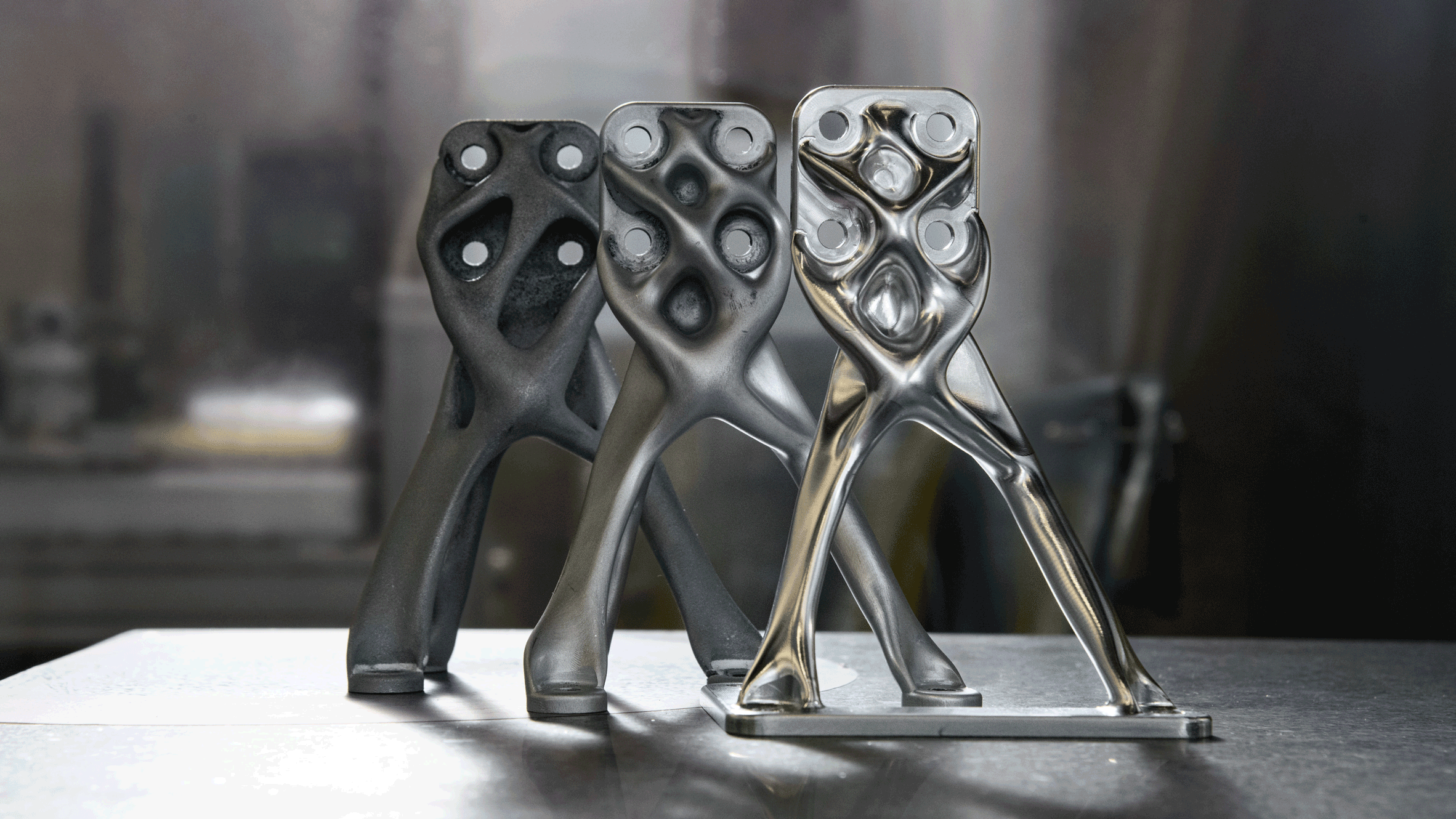
NASA uses AI to design hardware that is "three times better in performance"
Space agency NASA has started making use of artificial intelligence to develop its mission hardware, creating components that it says are significantly stronger than their human-designed counterparts while saving two-thirds of the weight.
The Evolved Structures process, developed by research engineer Ryan McClelland, takes a fraction of the time needed by NASA's expert designers and relies on a generative algorithm to create metal brackets and mounts for different space exploration missions.
"Humans, maybe they do an iteration every week or two between them, if things are going well," McClelland explained on NASA's Small Steps, Giant Leaps podcast.
"The AI will do something on the order of an iteration a minute. So, you get a lot more iteration cycles, and because of the more iteration cycles, you just get more optimal designs much, much faster."
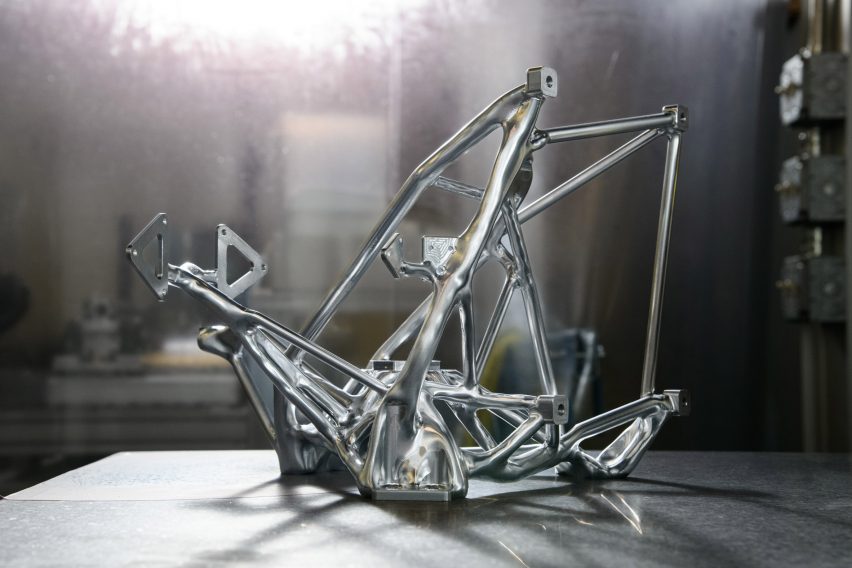
So far, the system has been used to design everything from a scaffold for NASA's balloon-borne EXCITE telescope to an optical bench for an ultraviolet imaging spectrometer to hold its optical components.
"Of the current applications, the optical bench is probably the most impressive," McClelland told Dezeen.
"It is a radical departure from typical optical benches and has far better structural performance. It also consolidated what would have been around 10 parts into a single part that can still be CNC machined."
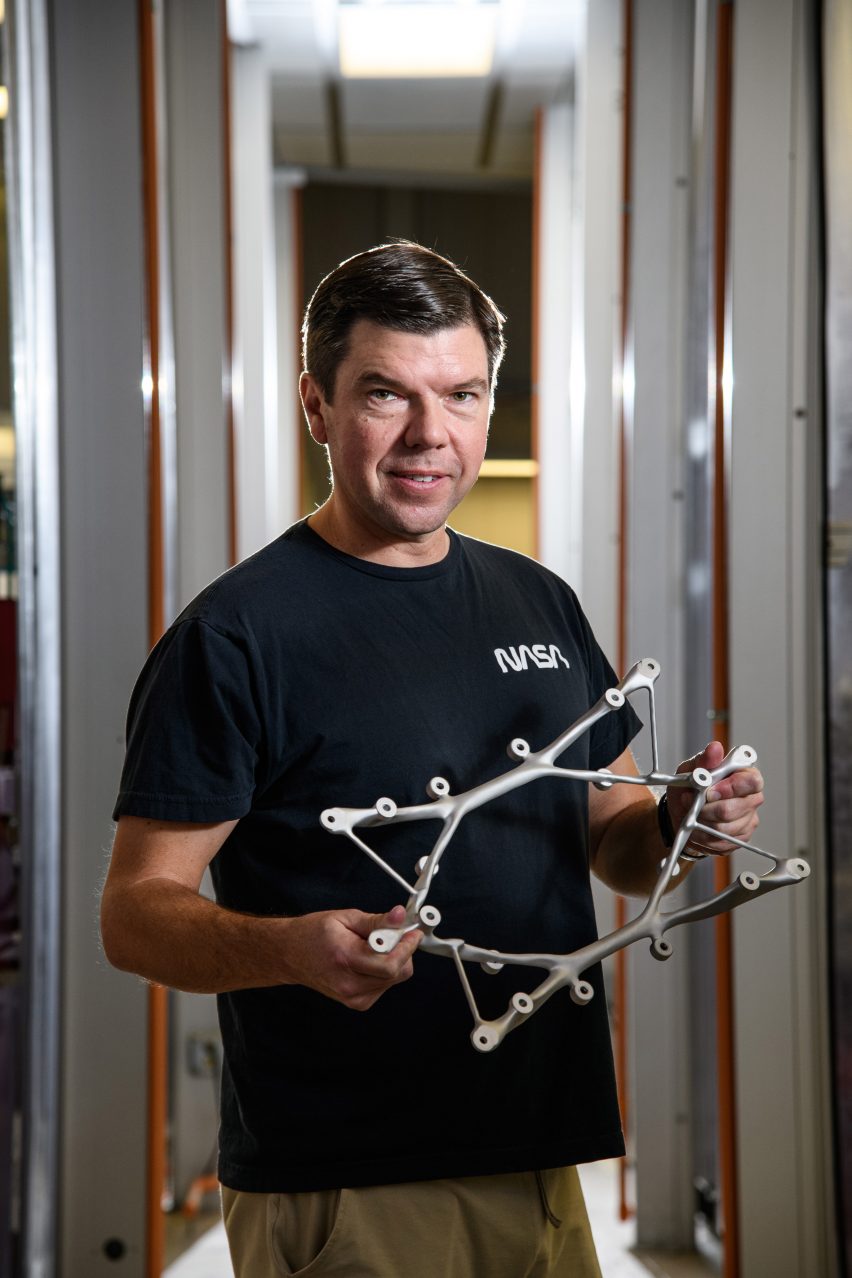
Much like the ChatGPT chatbot or image generator DALL-E, the system still relies on human input in the form of a precise brief, detailing the requirements for the part including the load it has to carry and what forces it will be exposed to.
This data is fed into the generative design software, which is able to produce 30 to 40 iterations in a few hours, each improving on the last to evolve an optimal structure.
"The AI comes up with the design, and then tests the design by finite element analysis to make sure it works, to verify the requirements and then it also does a fabrication simulation to make sure it can be fabricated," McClelland explained on the podcast.
That means the final design can be fed straight into a digital manufacturing process and machined by a standard CNC mill based on the CAD model.
From design to production, this process can take as little as one week. McClelland estimates that's around ten times faster than NASA's normal process, which involves the design being passed around between a designer, a stress analyst who checks its performance and a machinist who tests if it can be manufactured.
"What the Evolved Structures process does is take that back and forth that goes on between a few different people – and can take months or years depending on the project and how devoted the people are and whether they're working on other things – and it collapses that down to something that's all done by the computer," he said.
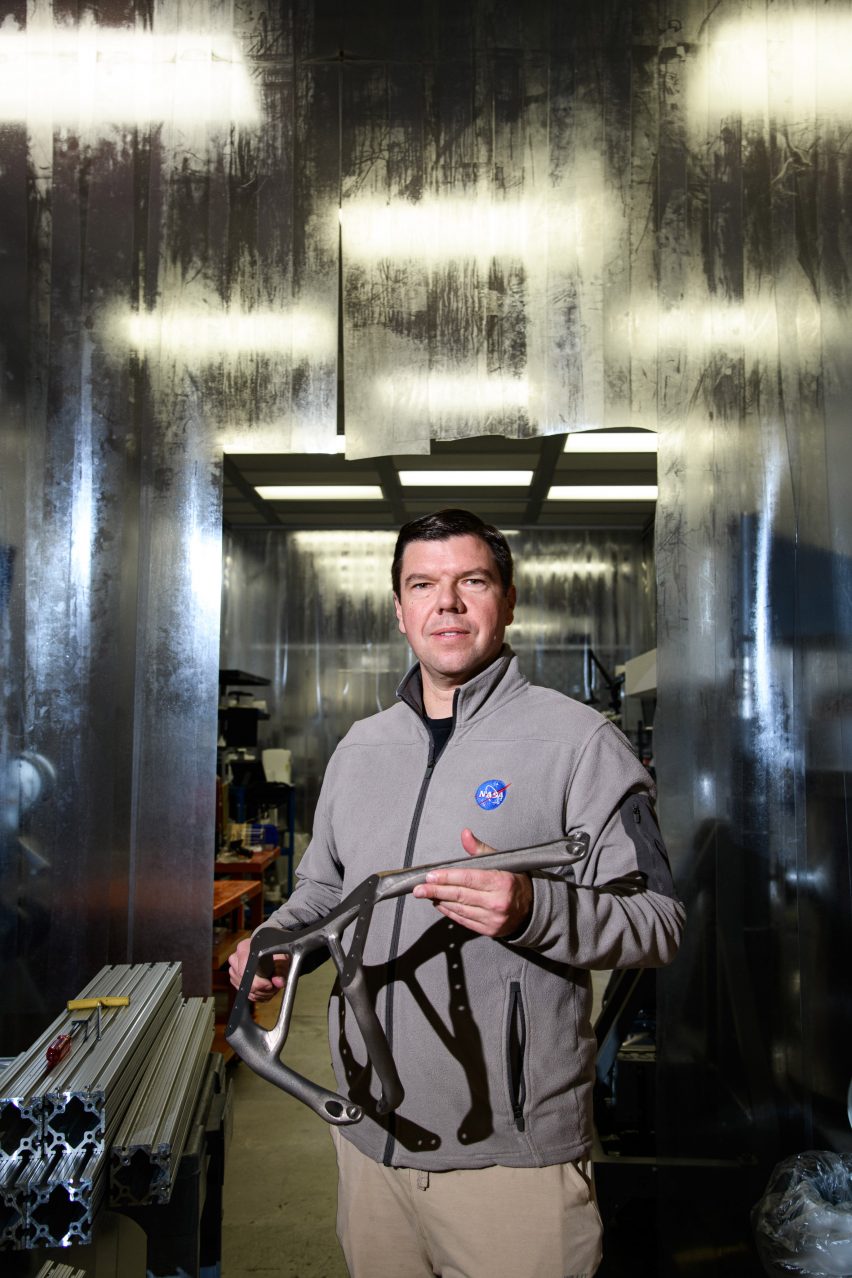
The resulting components feature "almost bone-like" organic shapes that are able to tolerate higher structural loads than parts produced by humans.
In fact, McClelland found that the AI-designed components have up to 10 times lower stress concentrations while saving up to two-thirds of the weight.
"The structures tend to perform much better," he said. "They're somewhere on the order of three times better in performance."
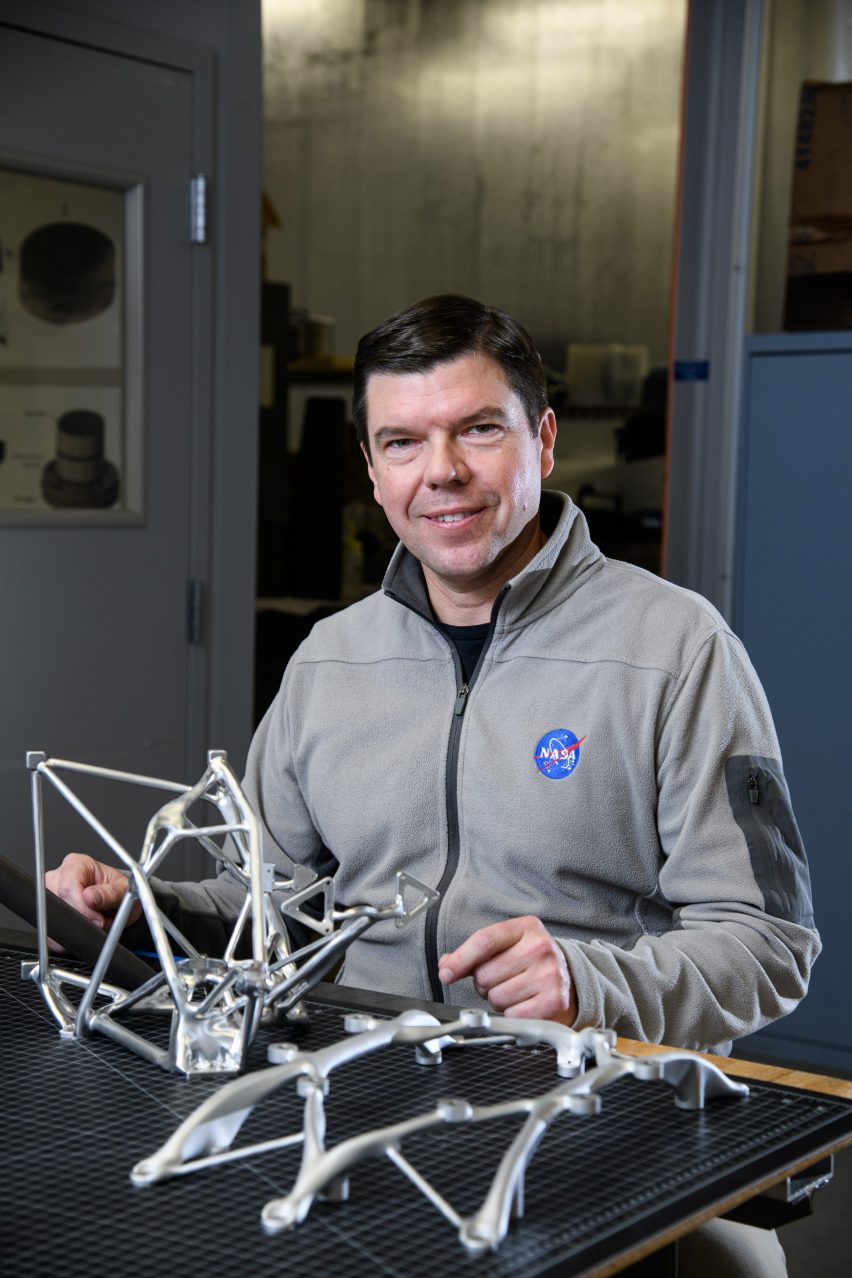
Given that NASA manufactures thousands of bespoke parts for its various different missions every year, McClelland predicts that the design process will become common practice when designing structural parts, electronics and other subsystems within NASA's instruments and spacecraft.
This, in turn, would help to reduce both the time and cost associated with space exploration.
"The space station holds six or seven people but it's $100 billion," he explained. "I really think AI has the potential to drastically lower the cost of developing these complex systems because it's really great at these sort of things."
Previously, German software company Hyperganic used AI to develop a rocket engine prototype that was 3D-printed in one piece.
The photography is by Henry Dennis.